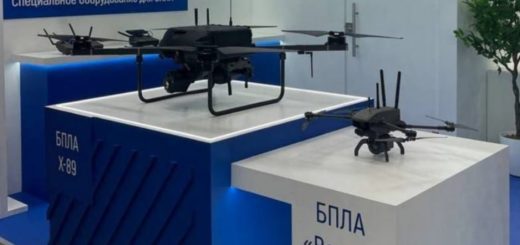Germany Stations Eurofighter Jets in Poland to Bolster NATO Air Patrols This Winter
{loadposition bannertop}
{loadposition sidebarpub}
Germany will station Eurofighter jets at Poland’s Malbork Air Base to support NATO’s Eastern Sentry patrols through winter. The move responds to recent Russian airspace violations and aims to strengthen deterrence along NATO’s eastern flank.
On 15 October 2025, Germany confirmed that German Eurofighter jets will be stationed at Poland’s Malbork air base for NATO patrols through the winter, a move shaped by recent Russian drone and airspace incidents along the Alliance’s eastern flank, as reported by Reuters. The deployment follows the launch in September of NATO’s “Eastern Sentry” mission after Polish airspace violations and comes alongside Germany’s plan to invest €10 billion in unmanned systems to harden European air defense. The stakes are immediate for Poland, a logistics hub for aid to Ukraine, and for Baltic air security, where allied fighters have routinely intercepted Russian aircraft. By bringing combat air power forward, Berlin aims to shorten response times and raise the cost of further probes.
Follow Army Recognition on Google News at this link
Germany’s Eurofighters operating from Malbork will deliver quick-reaction alert coverage, high-end air policing and armed patrols under NATO tasking (Picture source: German Air Force)
Germany’s Eurofighters operating from Malbork will deliver quick-reaction alert coverage, high-end air policing and armed patrols under NATO tasking. The twin-engine, multirole Typhoon combines strong high-altitude performance with modern sensors, datalinks and an electronic self-protection suite, enabling rapid intercepts, identification, and, if ordered, engagement against a spectrum of threats from fast jets to cruise missiles and drones. Forward basing in northeastern Poland places the aircraft closer to Baltic and Suwałki Gap air corridors, reducing scramble times and improving persistence on station while networking with allied ground-based air defense and AWACS assets assigned to Eastern Sentry. In parallel, Germany’s Bundestag Budget Committee has approved a €3.75 billion procurement for 20 new Eurofighters under the Tranche 5 package, with deliveries planned between 2031 and 2034. This acquisition will reinforce the Luftwaffe’s combat fleet and advance development of the Eurofighter EK electronic warfare variant, set to assume the Tornado ECR’s suppression of enemy air defenses mission.
Developed by a European consortium, Germany, the United Kingdom, Italy and Spain, the Eurofighter program began as a dedicated air-superiority effort and matured into a multirole platform through successive production “tranches” and software blocks. The type has amassed extensive NATO service in air policing, Baltic and Black Sea intercepts, and expeditionary deployments, with the German Luftwaffe routinely scrambling from Rostock-Laage to track uncooperative Russian aircraft over the Baltic in recent weeks. This operational pedigree underpins the decision to push aircraft forward to Poland during a period of elevated airspace pressure.
Against peer Western fighters, the Eurofighter’s strengths in the Malbork mission set are its climb rate, sustained supersonic performance and robust sensor-fusion for long-range detection and identification, advantages that matter for quick-reaction alert and deterrent presence. Compared with the lighter F-16 Block 70 or Gripen E, Typhoon carries more fuel and payload and benefits from twin-engine redundancy for overwater and border-adjacent patrols; compared with Rafale, it offers broadly similar multirole flexibility with a bias toward high-altitude air dominance tasks common in NATO policing. The fifth-generation F-35 brings stealth and deep-penetration ISR, but for routine sovereignty patrols and overt signalling, a visible, fast-climbing interceptor like the Eurofighter provides credible, cost-aware deterrence while integrating seamlessly with NATO’s command and control. These trade-offs explain why multiple allies are contributing Typhoons to Eastern Sentry alongside other types.
Strategically, the German move reinforces NATO’s posture on three levels. Geopolitically, it reassures frontline allies and signals Alliance unity at the ministerial level in Brussels, where Berlin also offered to take the lead in developing an EU air-defense shield architecture. Geostrategically, Malbork basing complements adaptive air policing across the Baltics and Poland, initiated after September’s incursions, tightening the sensor-shooter web from the Baltic Sea to the Carpathians. Militarily, pairing forward-based Eurofighters with Germany’s planned €10 billion investment in a broad drone portfolio strengthens layered defence, manned interceptors for fast, visible response, unmanned systems for persistent surveillance, point defence and counter-UAS, under NATO’s new Eastern Sentry construct. The result is faster decision-loops, more credible denial of airspace violations, and a higher threshold for opportunistic probes.
Germany’s winter deployment to Malbork, expected to run from December through March, expands allied air presence exactly where pressure has been most acute and ties national investments to collective defence effects. By moving capable interceptors forward while ramping up funding for drones and offering leadership on an EU air-defence shield, Berlin is turning ministerial rhetoric into immediate deterrent posture, and making further incursions a riskier bet for Moscow.
Written by Teoman S. Nicanci – Defense Analyst, Army Recognition Group
Teoman S. Nicanci holds degrees in Political Science, Comparative and International Politics, and International Relations and Diplomacy from leading Belgian universities, with research focused on Russian strategic behavior, defense technology, and modern warfare. He is a defense analyst at Army Recognition, specializing in the global defense industry, military armament, and emerging defense technologies.

{loadposition bannertop}
{loadposition sidebarpub}
Germany will station Eurofighter jets at Poland’s Malbork Air Base to support NATO’s Eastern Sentry patrols through winter. The move responds to recent Russian airspace violations and aims to strengthen deterrence along NATO’s eastern flank.
On 15 October 2025, Germany confirmed that German Eurofighter jets will be stationed at Poland’s Malbork air base for NATO patrols through the winter, a move shaped by recent Russian drone and airspace incidents along the Alliance’s eastern flank, as reported by Reuters. The deployment follows the launch in September of NATO’s “Eastern Sentry” mission after Polish airspace violations and comes alongside Germany’s plan to invest €10 billion in unmanned systems to harden European air defense. The stakes are immediate for Poland, a logistics hub for aid to Ukraine, and for Baltic air security, where allied fighters have routinely intercepted Russian aircraft. By bringing combat air power forward, Berlin aims to shorten response times and raise the cost of further probes.
Germany’s Eurofighters operating from Malbork will deliver quick-reaction alert coverage, high-end air policing and armed patrols under NATO tasking (Picture source: German Air Force)
Germany’s Eurofighters operating from Malbork will deliver quick-reaction alert coverage, high-end air policing and armed patrols under NATO tasking. The twin-engine, multirole Typhoon combines strong high-altitude performance with modern sensors, datalinks and an electronic self-protection suite, enabling rapid intercepts, identification, and, if ordered, engagement against a spectrum of threats from fast jets to cruise missiles and drones. Forward basing in northeastern Poland places the aircraft closer to Baltic and Suwałki Gap air corridors, reducing scramble times and improving persistence on station while networking with allied ground-based air defense and AWACS assets assigned to Eastern Sentry. In parallel, Germany’s Bundestag Budget Committee has approved a €3.75 billion procurement for 20 new Eurofighters under the Tranche 5 package, with deliveries planned between 2031 and 2034. This acquisition will reinforce the Luftwaffe’s combat fleet and advance development of the Eurofighter EK electronic warfare variant, set to assume the Tornado ECR’s suppression of enemy air defenses mission.
Developed by a European consortium, Germany, the United Kingdom, Italy and Spain, the Eurofighter program began as a dedicated air-superiority effort and matured into a multirole platform through successive production “tranches” and software blocks. The type has amassed extensive NATO service in air policing, Baltic and Black Sea intercepts, and expeditionary deployments, with the German Luftwaffe routinely scrambling from Rostock-Laage to track uncooperative Russian aircraft over the Baltic in recent weeks. This operational pedigree underpins the decision to push aircraft forward to Poland during a period of elevated airspace pressure.
Against peer Western fighters, the Eurofighter’s strengths in the Malbork mission set are its climb rate, sustained supersonic performance and robust sensor-fusion for long-range detection and identification, advantages that matter for quick-reaction alert and deterrent presence. Compared with the lighter F-16 Block 70 or Gripen E, Typhoon carries more fuel and payload and benefits from twin-engine redundancy for overwater and border-adjacent patrols; compared with Rafale, it offers broadly similar multirole flexibility with a bias toward high-altitude air dominance tasks common in NATO policing. The fifth-generation F-35 brings stealth and deep-penetration ISR, but for routine sovereignty patrols and overt signalling, a visible, fast-climbing interceptor like the Eurofighter provides credible, cost-aware deterrence while integrating seamlessly with NATO’s command and control. These trade-offs explain why multiple allies are contributing Typhoons to Eastern Sentry alongside other types.
Strategically, the German move reinforces NATO’s posture on three levels. Geopolitically, it reassures frontline allies and signals Alliance unity at the ministerial level in Brussels, where Berlin also offered to take the lead in developing an EU air-defense shield architecture. Geostrategically, Malbork basing complements adaptive air policing across the Baltics and Poland, initiated after September’s incursions, tightening the sensor-shooter web from the Baltic Sea to the Carpathians. Militarily, pairing forward-based Eurofighters with Germany’s planned €10 billion investment in a broad drone portfolio strengthens layered defence, manned interceptors for fast, visible response, unmanned systems for persistent surveillance, point defence and counter-UAS, under NATO’s new Eastern Sentry construct. The result is faster decision-loops, more credible denial of airspace violations, and a higher threshold for opportunistic probes.
Germany’s winter deployment to Malbork, expected to run from December through March, expands allied air presence exactly where pressure has been most acute and ties national investments to collective defence effects. By moving capable interceptors forward while ramping up funding for drones and offering leadership on an EU air-defence shield, Berlin is turning ministerial rhetoric into immediate deterrent posture, and making further incursions a riskier bet for Moscow.
Written by Teoman S. Nicanci – Defense Analyst, Army Recognition Group
Teoman S. Nicanci holds degrees in Political Science, Comparative and International Politics, and International Relations and Diplomacy from leading Belgian universities, with research focused on Russian strategic behavior, defense technology, and modern warfare. He is a defense analyst at Army Recognition, specializing in the global defense industry, military armament, and emerging defense technologies.







